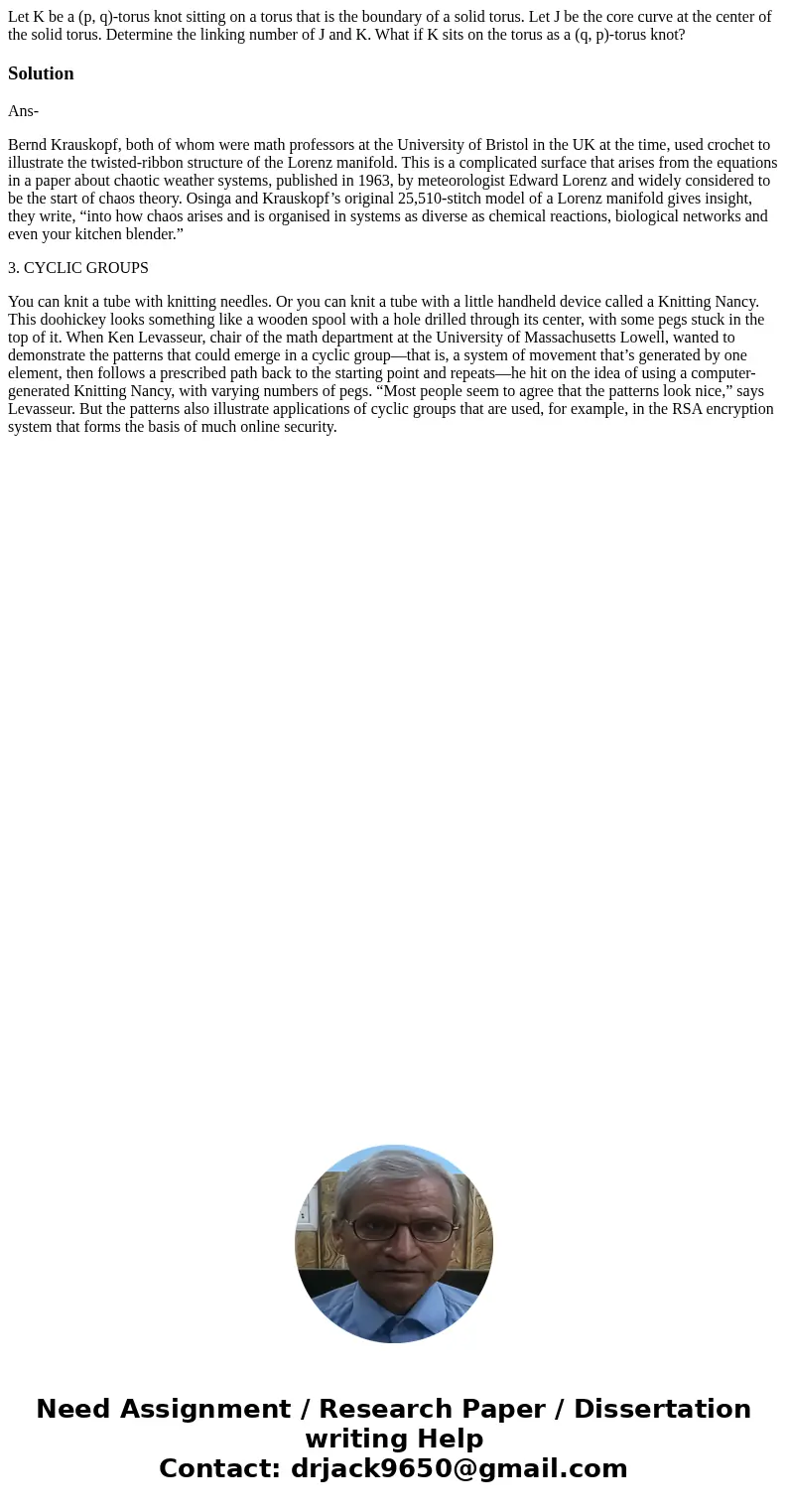Let K be a p qtorus knot sitting on a torus that is the boun
Solution
Ans-
Bernd Krauskopf, both of whom were math professors at the University of Bristol in the UK at the time, used crochet to illustrate the twisted-ribbon structure of the Lorenz manifold. This is a complicated surface that arises from the equations in a paper about chaotic weather systems, published in 1963, by meteorologist Edward Lorenz and widely considered to be the start of chaos theory. Osinga and Krauskopf’s original 25,510-stitch model of a Lorenz manifold gives insight, they write, “into how chaos arises and is organised in systems as diverse as chemical reactions, biological networks and even your kitchen blender.”
3. CYCLIC GROUPS
You can knit a tube with knitting needles. Or you can knit a tube with a little handheld device called a Knitting Nancy. This doohickey looks something like a wooden spool with a hole drilled through its center, with some pegs stuck in the top of it. When Ken Levasseur, chair of the math department at the University of Massachusetts Lowell, wanted to demonstrate the patterns that could emerge in a cyclic group—that is, a system of movement that’s generated by one element, then follows a prescribed path back to the starting point and repeats—he hit on the idea of using a computer-generated Knitting Nancy, with varying numbers of pegs. “Most people seem to agree that the patterns look nice,” says Levasseur. But the patterns also illustrate applications of cyclic groups that are used, for example, in the RSA encryption system that forms the basis of much online security.

 Homework Sourse
Homework Sourse